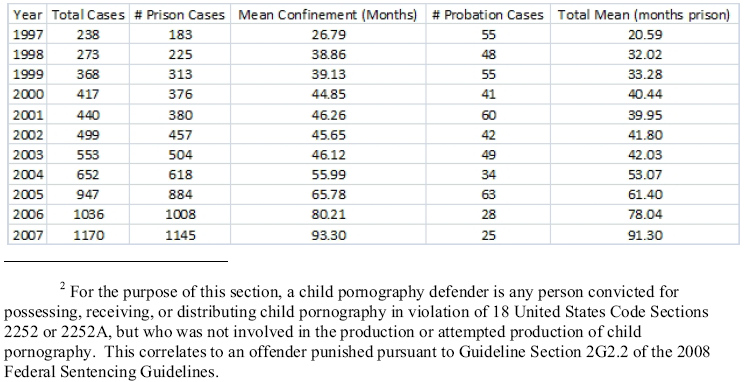One of our staff members is contributing considerably to a News Archiving service at Mu. Any well educated (Masters, PhD or above) users who wish to make comments on news sites, please contact Jim Burton directly rather than using this list, and we can work on maximising view count.
Talk:Research: Child Pornography: Difference between revisions
The Admins (talk | contribs) No edit summary |
The Admins (talk | contribs) No edit summary |
||
| Line 19: | Line 19: | ||
http://anthonydamato.law.northwestern.edu/Adobefiles/porn.pdf | http://anthonydamato.law.northwestern.edu/Adobefiles/porn.pdf | ||
==Newer research?== | |||
Perhaps search for some of the more recent authors' works 2010-21? --[[User:The Admins|The Admins]] ([[User talk:The Admins|talk]]) 08:40, 4 October 2021 (CEST) | |||
:''Official explanations for the unexpected decline include (1) less lawlessness | :''Official explanations for the unexpected decline include (1) less lawlessness | ||
Revision as of 06:40, 4 October 2021
The table data: http://anu.nfshost.com/2008/the-content-of-indecent-images may also be of interest. Daniel 03:30, 8 May 2008 (UTC)
- The data contained within the table is discussed within the section titled The Nature of Child Pornography. Brian 22:31, 9 May 2008 (UTC)
- I thought I'd added that data to this article, but I hadn't. I've added it now. Brian 01:53, 21 May 2008 (UTC)
- New York v. Ferber
- In 1977, child pornography and child prostitution were reported to be "highly organized, multimillion dollar industries." If both this statistic and the current multibillion claim are accurate, then the ban on child pornography must have been accompanied by a drastic increase in its profitability.
Collapse generic data/summarise
Because of the size of this article, it may be best to collapse the data on internet use and legitimate porn at the top, alongside the graph. The Admins 00:37, 17 June 2009 (UTC)
Goode
"If we turn to the use of child pornography, this has been of increasing concern over the past few years, as shown for example by the international police operation known as Operation Ore which resulted in 7,000 arrests in Britain in 2003. What impact did this have on the level of cautions and convictions? In 2003, when Operation Ore was at its height, the figures from England and Wales more than doubled. From 531 in 2002, the total peaked in 2003 at 1,287 people found guilty of taking, making or possessing an indecent photograph of a child. Since 2003, the figures have settled at around 1,000 people a year: 1,162 in 2004, 1,154 in 2005 and 934 in 2006 (data from Ministry of Justice, personal communication, May 2008). So, judging by the number of individuals found guilty of child pornography offences, it would seem, as with direct sexual contact offences, to be a very small-scale phenomenon indeed." The Admins 22:15, 18 July 2009 (UTC)
Amato
http://anthonydamato.law.northwestern.edu/Adobefiles/porn.pdf
Newer research?
Perhaps search for some of the more recent authors' works 2010-21? --The Admins (talk) 08:40, 4 October 2021 (CEST)
- Official explanations for the unexpected decline include (1) less lawlessness
associated with crack cocaine; (b) women have been taught to avoid unsafe situations; (c) more would-be rapists already in prison for other crimes; (d) sex education classes telling boys that “no means no.” But these minor factors cannot begin to explain such a sharp decline in the incidence of rape.
- There is, however, one social factor that correlates almost exactly with the rape
statitistics. The American public is probably not ready to believe it. My theory is that the sharp rise in access to pornography accounts for the decline in rape. The correlation is inverse: the more pornography, the less rape. It is like the inverse correlation: the more police officers on the street, the less crime. The Admins 23:35, 31 July 2009 (UTC)
Deconstructing the Myth of Careful Study
Even looking only at the start of this article, we get figures on sentences over time (since CP possession was criminalised):
The Admins 23:12, 3 August 2009 (UTC)
